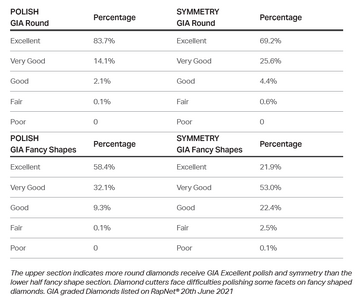Hi all
I am getting a ring designed at a local jewelers. It will have a 0.4 - 0.5ct marquise diamond.
Once they provide me with some stone options, how do I ensure that I am choosing the best stone in terms of sparkle etc?
(They did show me a couple options but I didn't feel 100% and i've decided to go slightly larger. I am waiting for some more slightly larger stone options).
They will send me videos, but I don't think they have aset scope images.
I tried going onto James Allen's website and putting different depth and table dimensions in (to give me an idea) and I felt there were good and bad in each category.
Are table and depth really that reliable for marquise?
Any advice appreciated!
I am getting a ring designed at a local jewelers. It will have a 0.4 - 0.5ct marquise diamond.
Once they provide me with some stone options, how do I ensure that I am choosing the best stone in terms of sparkle etc?
(They did show me a couple options but I didn't feel 100% and i've decided to go slightly larger. I am waiting for some more slightly larger stone options).
They will send me videos, but I don't think they have aset scope images.
I tried going onto James Allen's website and putting different depth and table dimensions in (to give me an idea) and I felt there were good and bad in each category.
Are table and depth really that reliable for marquise?
Any advice appreciated!





300x240.png)